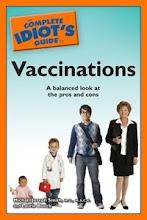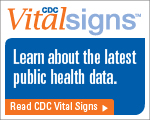Much has been written about the shortage of primary-care doctors needed to treat the influx of patients anticipated when the Affordable Care Act is fully implemented in 2014. To help solve this problem, Kaiser Health News reported today that some states are expanding the role of nurse practitioners to serve as a patient's primary care provider. The KHN Daily Report also cited a Chicago Sun-Times article about the increasing number of medical school students who choose to enter primary care fields ("More young doctors choosing careers in primary care"). These students are spurred on by health care reform's financial incentives for this choice, such as increased Medicare reimbursement.
But like many things in medicine (heck, in life as well), fixing the problem is more complicated than it first appears. More doctors alone don't always mean better patient care. In February, The Commonwealth Fund reported that a nationwide survey of about 2,500 Medicare patients found that patients with more doctors in their area weren't any happier with their care than patients with fewer doctors in their area. Improving health policy and organizing health care networks better might be more effective than adding more doctors to the mix, the survey's authors said in Health Affairs, which posted the study.
And when we look at the "doctor shortage" problem, should we focus on supporting generalists or specialists? Fierce Healthcare recently reported that a shortage of surgeons (not general practitioners) in some areas of the country leads to higher mortality rates after motor vehicle accidents. A recent study in the Journal of the American College of Surgeons found that in areas with fewer surgeons, accident victims are less likely to receive timely life-saving surgery.
Not that every doctor should specialize, though, because specialization in medicine has its own limitations. The title of a March report from the New England Journal of Medicine shows the absurdity of current specialization trends: "Specialization, Subspecialization, and Subsubspecialization in Internal Medicine." The report's authors explain that formalized specialization fragments care, and the time spent maintaining certification might undermine a doctor's broader knowledge of his or her field. Patients, on the other hand, are impressed by the skill set implied by specialization. Health plans promote specialization as a marketing tool to attract more patients. There must be a reason to create each specialty, though, the authors write. "A proliferation of specialties without adequate justification may simply confuse the public without creating a social good," they conclude.
Ultimately, the problem of generalists versus specialists comes down to policy: what mix of generalists and specialists will best serve the public good? And what policies need to be in place to provide a steady supply of each type of doctor needed, and to help both types of doctors provide the best possible patient care?
Showing posts with label Primary care provider. Show all posts
Showing posts with label Primary care provider. Show all posts
Tuesday, March 29, 2011
Thursday, May 29, 2008
The Price of Being a Patient
Whatever benefits modern medicine has for patients, I've experienced first-hand its power to undermine your ordinary life. In the spring, I switched primary care providers when I became frustrated with my long-time PCP's sluggish response to several urgent medical problems. When I gave my new PCP a sticky note listing a few medical concerns of mine at our first meeting, however, I inadvertently triggered an avalanche of medical appointments. She gave me a few referrals to specialists, including physical therapy to resolve some old injuries, and as I dutifully worked my way through the list I watched my time slip away. Add to that several medical checkups for my children, and the time drain was enormous.
Perhaps unwisely, I added it all up: six medical appointments in April (one of them for a child), and nine in May (one for a child). Some were mercifully clustered around a medical campus in the north part of city, some in the south part of the city, and two were east or west of the medical campus. Some providers collected co-pays on the spot, and others sent a big fat bill later on ("What's this?" my husband asked, waving an itemized list of co-pays in the air recently). To complicate things further, my insurance company periodically sent me bills for provider visits recommended by my PCP that they only covered partially.
My experience was typical, according to a poll of women's views of health care released today by the American Academy of Family Physicians (AAFP). The Harris Interactive poll of 1,270 women, commissioned by the AAFP, found that cost and time constraints were the top challenges women faced in obtaining health care for themselves and their families (in San Francisco, I would add "parking"). The AAFP used the poll's data to advocate for a medical home model, where all medical care is coordinated through a primary care physician and streamlined through technology such as electronic medical records, e-prescribing, and emails between patients and providers.
Considering the number of uninsured Americans, I'm supposed to write that I'm grateful to have decent medical insurance -- which I am, of course. I'm also grateful, however, for the new clients I gained in May, whose work, out of necessity, took up many nights and weekends this month as I juggled interesting new assignments with a relentless march of medical appointments. I'm equally grateful, as these appointments wind down at last, that I'm not coping with a chronic condition that requires frequent provider visits, and co-pays or bills for visits, prescriptions, or durable medical equipment.
At the end of May now, I have finished my assignments and met my target number of work hours, although I spent less time than I wanted to with my children. Luckily, I managed to squeeze in a weekday off to play hooky with my older daughter recently, who had a rough month at school. We both needed the break.
Perhaps unwisely, I added it all up: six medical appointments in April (one of them for a child), and nine in May (one for a child). Some were mercifully clustered around a medical campus in the north part of city, some in the south part of the city, and two were east or west of the medical campus. Some providers collected co-pays on the spot, and others sent a big fat bill later on ("What's this?" my husband asked, waving an itemized list of co-pays in the air recently). To complicate things further, my insurance company periodically sent me bills for provider visits recommended by my PCP that they only covered partially.
My experience was typical, according to a poll of women's views of health care released today by the American Academy of Family Physicians (AAFP). The Harris Interactive poll of 1,270 women, commissioned by the AAFP, found that cost and time constraints were the top challenges women faced in obtaining health care for themselves and their families (in San Francisco, I would add "parking"). The AAFP used the poll's data to advocate for a medical home model, where all medical care is coordinated through a primary care physician and streamlined through technology such as electronic medical records, e-prescribing, and emails between patients and providers.
Considering the number of uninsured Americans, I'm supposed to write that I'm grateful to have decent medical insurance -- which I am, of course. I'm also grateful, however, for the new clients I gained in May, whose work, out of necessity, took up many nights and weekends this month as I juggled interesting new assignments with a relentless march of medical appointments. I'm equally grateful, as these appointments wind down at last, that I'm not coping with a chronic condition that requires frequent provider visits, and co-pays or bills for visits, prescriptions, or durable medical equipment.
At the end of May now, I have finished my assignments and met my target number of work hours, although I spent less time than I wanted to with my children. Luckily, I managed to squeeze in a weekday off to play hooky with my older daughter recently, who had a rough month at school. We both needed the break.
Subscribe to:
Posts (Atom)



